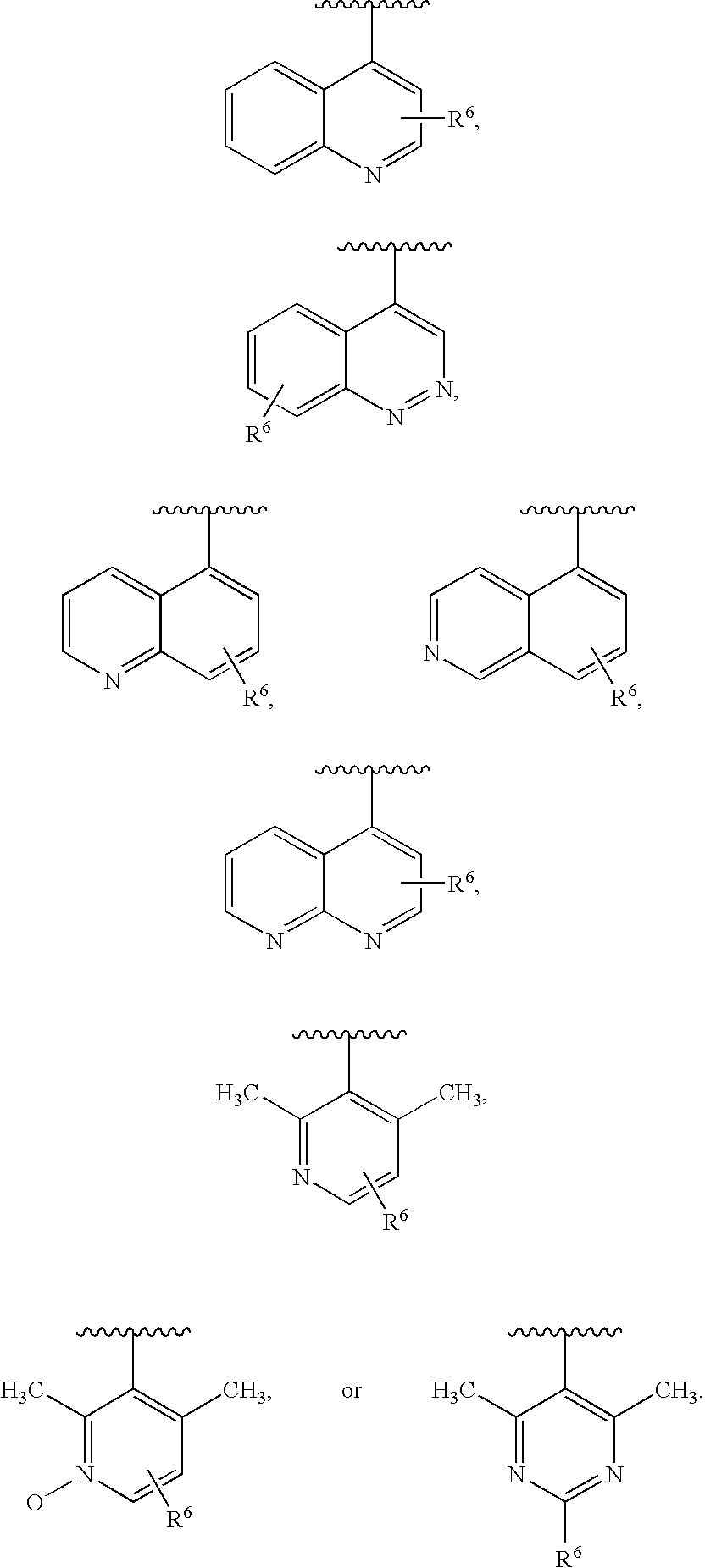Combination therapy for human immunodeficiency virus infection
a technology of immunodeficiency virus and therapy, which is applied in the field of combination therapies for the treatment of human immunodeficiency virus (hiv) infection, can solve the problems that hiv infection is a major worldwide medical problem, and there is currently no agent to which hiv-1 has not been able to acquire resistance, so as to and reduce the incidence of hiv infection.
- Summary
- Abstract
- Description
- Claims
- Application Information
AI Technical Summary
Benefits of technology
Problems solved by technology
Method used
Image
Examples
example a
CCR5 Expression
[0237] A leukophoresis (Biological Specialty, Colmar, Pa.) was obtained from normal, drug free donors and peripheral blood mononuclear cells (PBMCs) were isolated via density gradient centrifugation. Monocytes were further isolated via centrifugal elutriation. After being washed, the monocytes were re-suspended at 106 cells / ml with RPMI (Invitrogen, Carlsbad, Calif.) supplemented with 10% FBS (Hyclone, Logan, Utah) and 10-20 ng / mL of recombinant human IL-10 (R&D systems, Minneapolis, Minn.) and incubated in the same medium at 37° C. with 5% CO2 for 24-48 hr. CCR5 expression on the IL-10-treated monocytes was then verified by staining the cells with a PE-conjugated anti-human CCR5 antibody ((PharMingen, San Diego, Calif.), followed by FACS analysis using FACSCalibur (BD Biosciences, Bedford, Mass.).
example b
CCR5 Binding Assay
[0238] In a 96 well MULTISCREEN™ filter plate (Millipore Systems, Billerica, Mass.), 3×105 IL-10-treated monocytes in 150 μL RPMI (Invitrogen, Carlsbad, Calif.) with 20 mM HEPES (Invitrogen, Carlsbad, Calif.) and 0.3% BSA (Sigma, St Louis, Mo.) were incubated at room temperature for 1 hr. with 0.2 nM 125I-MIP-1β (Perkin Elmer, Boston, Mass.) and a series concentrations of compound of the invention. Non-specific binding was determined by incubating the cells with 0.3 μM MIP-1β (R&D Systems, Minneapolis, Minn.). The binding reaction was terminated by harvesting the cells onto the filter in the plate on a vacuum manifold (Millipore Systems, Billerica, Mass.). The filter was then washed 5 times with RPMI (Invitrogen, Carlsbad, Calif.) supplemented with 20 mM HEPES (Invitrogen, Carlsbad, Calif.), 0.3% BSA (Sigma, St Louis, Mo.) and 0.4 M NaCl on the vacuum manifold, air dried, and peeled from the plate. The filter dishes corresponding to the sample wells in a filter pl...
example c
HIV-1 Entry Assay
[0239] Replication defective HIV-1 reporter virions are generated by cotransfection of a plasmid encoding the NL4-3 strain of HIV-1 (which has been modified by mutation of the envelope gene and introduction of a luciferase reporter plasmid) along with a plasmid encoding one of several HIV-1 envelope genes as described by, for example, Connor et al, Virology, 206 (1995), 935-944. Following transfection of the two plasmids by calcium phosphate precipitation, the viral supernatants are harvested on day 3 and a functional viral titer determined. These stocks are then used to infect U87 cells stably expressing CD4 and the chemokine receptor CCR5 which have been preincubated with or without test compound. Infections are carried out for 2 hours at 37° C., the cells washed and media replaced with fresh media containing compound. The cells are incubated for 3 days, lysed and luciferase activity determined. Results are reported as the concentration of compound required to in...
PUM
| Property | Measurement | Unit |
|---|---|---|
| molecular weight | aaaaa | aaaaa |
| pharmaceutical composition | aaaaa | aaaaa |
| chemical | aaaaa | aaaaa |
Abstract
Description
Claims
Application Information
 Login to View More
Login to View More - Generate Ideas
- Intellectual Property
- Life Sciences
- Materials
- Tech Scout
- Unparalleled Data Quality
- Higher Quality Content
- 60% Fewer Hallucinations
Browse by: Latest US Patents, China's latest patents, Technical Efficacy Thesaurus, Application Domain, Technology Topic, Popular Technical Reports.
© 2025 PatSnap. All rights reserved.Legal|Privacy policy|Modern Slavery Act Transparency Statement|Sitemap|About US| Contact US: help@patsnap.com



